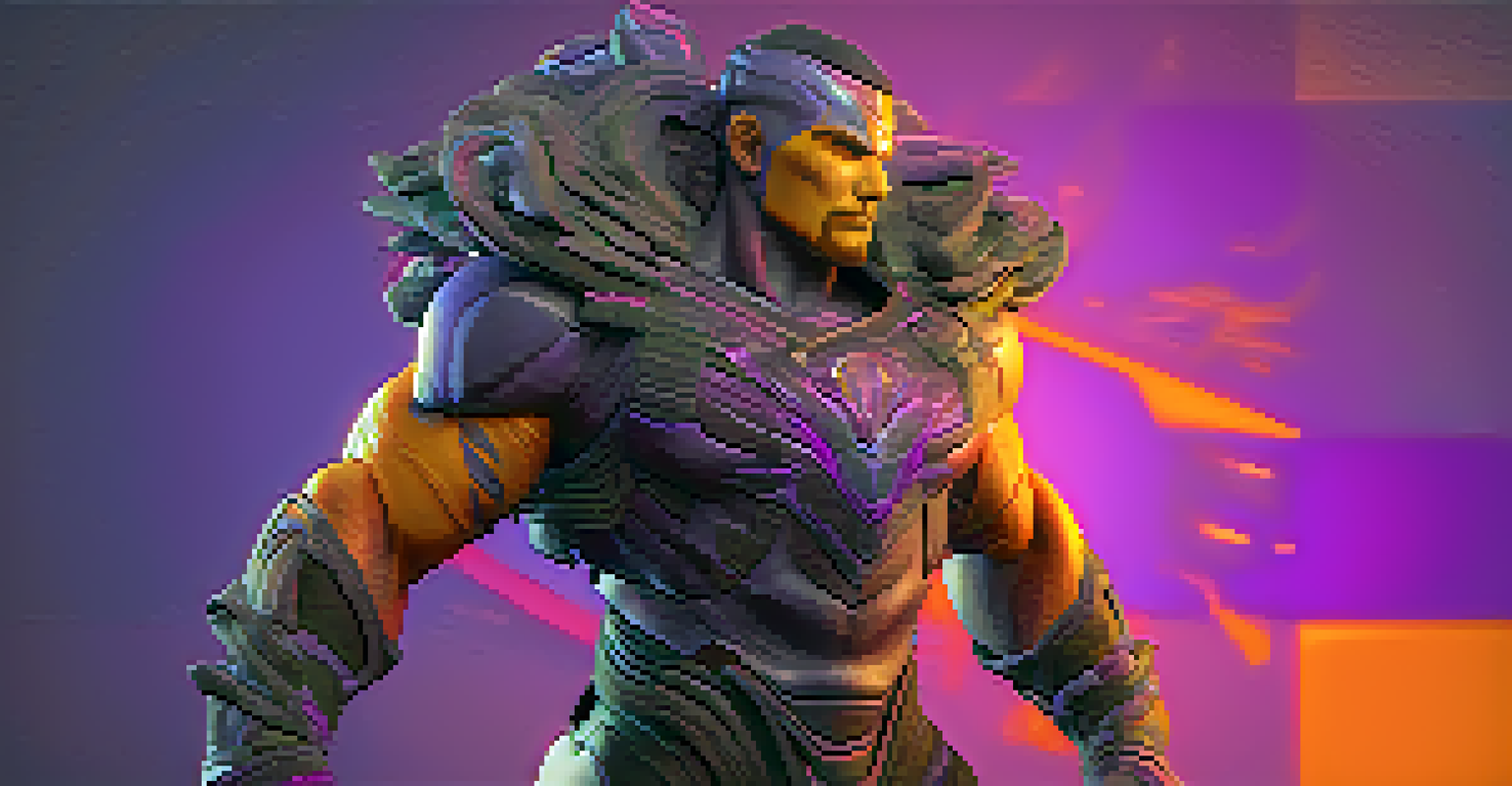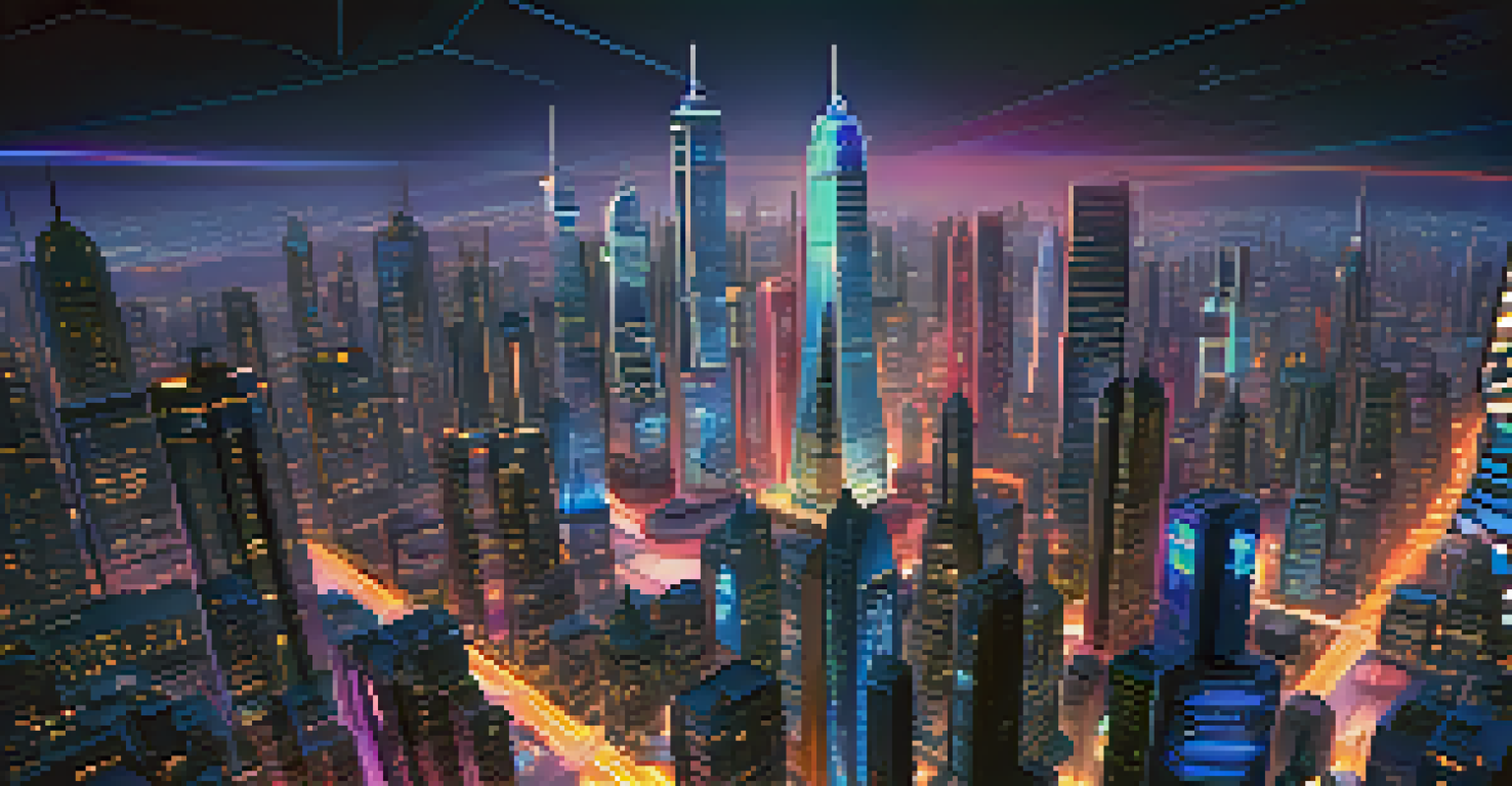Exploring the Use of 3D Modeling in Digital Art Creations

Understanding 3D Modeling: The Basics Explained
3D modeling is the process of creating a three-dimensional representation of any object or surface using specialized software. Think of it as sculpting, but in a digital space where artists can manipulate shapes and forms with precision. This technique allows artists to visualize their ideas in a way that traditional art forms simply can't match.
The greatest artists are those who can see the beauty in the everyday and transform it into something extraordinary.
In the realm of digital art, 3D modeling is a game changer. It enables artists to create intricate designs that can be rotated and viewed from various angles, providing a level of detail and realism that flat images lack. For instance, a designer creating a character for a video game can model every contour of their physique, which can then be animated with lifelike movements.
As you delve deeper into 3D modeling, it’s essential to grasp terms like vertices, edges, and polygons. These are the building blocks of any 3D model. By understanding these concepts, artists can refine their skills and push the boundaries of their creativity.
The Evolution of 3D Modeling in Digital Art
Once limited to the realms of animation and gaming, 3D modeling has evolved to permeate various forms of digital art. Today, artists use this technology in everything from illustrations and graphic design to virtual reality experiences. The shift can be likened to how photography transformed painting; suddenly, artists had a new medium to express their visions.

With advancements in software like Blender and Autodesk Maya, 3D modeling has become more accessible to budding artists. These tools offer user-friendly interfaces and extensive libraries of resources, making it easier than ever for anyone to jump into 3D art. An aspiring artist can now create stunning works from the comfort of their home, opening doors to new creative possibilities.
3D Modeling Transforms Digital Art
The evolution of 3D modeling has revolutionized digital art, enabling artists to create intricate designs and immersive experiences.
Moreover, as technology advances, we see 3D modeling merging with other disciplines, such as architecture and product design. This intersection fosters innovative approaches, allowing artists to explore how their work interacts with the world around them.
Key Tools for 3D Modeling in Digital Art
To create impressive 3D models, artists rely on a variety of software tools. Programs like Blender, ZBrush, and Cinema 4D are popular choices, each offering unique features tailored to different artistic needs. For example, Blender is known for being free and open-source, making it an attractive option for beginners looking to experiment without a financial commitment.
Art is not freedom from discipline, but disciplined freedom.
In addition to software, hardware also plays a crucial role in 3D modeling. A powerful computer with a good graphics card can significantly enhance the modeling experience, allowing for smoother rendering and quicker processing times. Think of it as having a high-performance bike that lets you ride faster and more efficiently on your creative journey.
As artists become more skilled, they often incorporate additional tools like 3D scanners and printing services. These technologies enable them to bring their digital creations into the physical world, bridging the gap between virtual and tangible art.
3D Modeling Techniques: Bringing Art to Life
Creating a 3D model involves various techniques that can bring artwork to life in unique ways. Some common methods include polygon modeling, which is about building up a shape by connecting points, and sculpting, where artists can manipulate a model like clay. Each technique offers a different approach to creating textures and forms, much like different brush strokes in painting.
Another fascinating technique is texture mapping, where artists apply images or patterns to the surface of their models, adding depth and realism. Imagine dressing a mannequin; just as clothes can transform its appearance, textures can enhance the visual appeal of a 3D object. This step is crucial, especially in industries like gaming and film, where realism is paramount.
Key Tools Enhance 3D Creation
Software like Blender and ZBrush, along with powerful hardware, empower artists to effectively create and refine 3D models.
Lighting and shading are also important aspects of 3D modeling. By manipulating light sources and shadows, artists can create mood and atmosphere, influencing how viewers perceive their work. It's akin to how a director uses lighting in film to evoke specific emotions, guiding the audience’s experience.
The Role of 3D Modeling in Animation
Animation and 3D modeling go hand-in-hand, with the latter serving as the backbone for creating animated characters and environments. In animation, each 3D model is rigged with a skeletal structure that allows for movement, similar to how a puppet operates. This process breathes life into the static models, transforming them into dynamic entities.
For instance, in animated films, a character’s personality is often expressed through their movements and facial expressions. 3D modeling facilitates this by allowing animators to manipulate models in ways that convey emotion and action. Think of it as a dance; the more fluid and expressive the movements, the more engaging the performance.
Moreover, advancements in motion capture technology have further revolutionized how 3D animation is created. By capturing the movement of real actors and applying it to 3D models, animators can achieve incredibly lifelike animations. This technique has become a staple in modern filmmaking, pushing the boundaries of creativity.
3D Modeling in Virtual and Augmented Reality
Virtual reality (VR) and augmented reality (AR) are exciting frontiers in the world of digital art, where 3D modeling plays a pivotal role. Artists can create immersive environments that allow users to interact with their work in unprecedented ways. Imagine stepping into a painting and experiencing it as if you were living inside it; that’s the magic of VR.
In AR, 3D modeling enables digital objects to be integrated into the real world through smartphones and AR glasses. This blending of realities opens up new avenues for storytelling and artistic expression. For example, a museum could use AR to allow visitors to see additional layers of content overlaid on real exhibits, enhancing their understanding and appreciation.
Future Opportunities in 3D Art
As technologies like AI and the metaverse advance, the demand for skilled 3D modelers will continue to grow, offering exciting creative possibilities.
As these technologies continue to evolve, the demand for skilled 3D modelers will only grow. Artists who embrace this shift can position themselves at the forefront of a rapidly changing landscape, creating experiences that captivate and engage audiences in ways previously thought impossible.
The Future of 3D Modeling in Digital Art
Looking ahead, the future of 3D modeling in digital art is bright and full of potential. As new technologies emerge, artists will have access to even more powerful tools that can enhance their creative processes. For instance, advancements in artificial intelligence might enable software to suggest improvements or automate repetitive tasks, allowing artists to focus on their vision.
Moreover, the rise of the metaverse and digital spaces will likely increase the demand for 3D art. As more businesses and creators build virtual worlds, skilled 3D modelers will be essential in crafting engaging experiences. It’s a bit like the gold rush; those who invest their time and effort into developing these skills now may find themselves in high demand in the near future.

Ultimately, 3D modeling offers endless possibilities for artists, inviting them to push the boundaries of their imagination. Whether it’s through animation, VR, or traditional art forms, the future holds exciting opportunities for those willing to explore this vibrant medium.